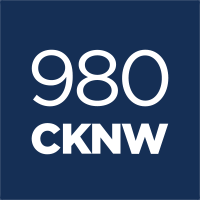What do parents, guardians, and students in the Vancouver School District need to know about the return to school under COVID-19?

On Mornings With Simi, we’ve heard from many who are eager to get more information as students prepare to return on Sept. 10.
Vancouver School Board superintendent Suzanne Hoffman joined the show on Wednesday to share three things parents need to know.
1.) There will be a transition option
Not ready to send your kid into a classroom just yet? The board’s transition option will allow students to learn online while staying connected with the school community.
“Mostly, it is learning from home with the support of families,” said Hoffman, “with check-ins throughout the week — a couple times — with our schools.”
The transition option will also help parents who are worried their child may lose their placement if they are not comfortable returning to in-person instruction, Hoffman said.
However, the transition option is not expected to be ready until Sept. 21.
“We need a little more time to make sure we have all things in place,” she said.
2.) Physical distancing is a top priority
One of the most common questions we hear from listeners is about ensuring the two-metre distance between students.
Two B.C. fathers have filed a lawsuit claiming the province’s back-to-school plan cannot possibly allow for proper social-distancing and is “fundamentally flawed.” In response, Education Minister Rob Fleming has said he is confident in the plans that have been approved at B.C.’s 60 school districts.

According to provincial government guidelines, students and staff in the same learning group do not need to be two metres apart at all times, but they must limit the amount of physical contact they have.
“On a school-by-school, class-by-class basis, administrators and teachers — when they return — will look at class space and the ability to physically distance as much as possible,” Hoffman said.
Removing excess furniture from classrooms over the summer and anticipating fewer students because of the transition option will also help, she said.
What about those schools where class sizes are already very large?
“We would look at learning from the outside,” Hoffman said, such as playgrounds, sports fields, libraries, or gymnasiums.
3.) Families who have a child with complex learning needs can expect to hear from their schools
What about kids with complex learning needs?
“Knowing what the supports will be, even in school or through a hybrid or remote option in any given district, is really hard to find out right now,” said Tracy Humphreys, founder and chair of BCEdAccess and mother of three children with disabilities. “Schools don’t really know and they haven’t been able to tell families.”
Hoffman said schools will be in touch with parents whose children require extra assistance.
“Having students coming in to school five days a week for sure is part of those Complex Learners programs that we will continue to support.”
All 60 school districts in B.C. have published their own plans online. More information about Vancouver’s plan is on its website.
Niki Reitmayer is a contributor on 980 CKNW’s Mornings with Simi. You can listen weekdays from 5:30 a.m. to 9 a.m. on 980 CKNW.







Comments